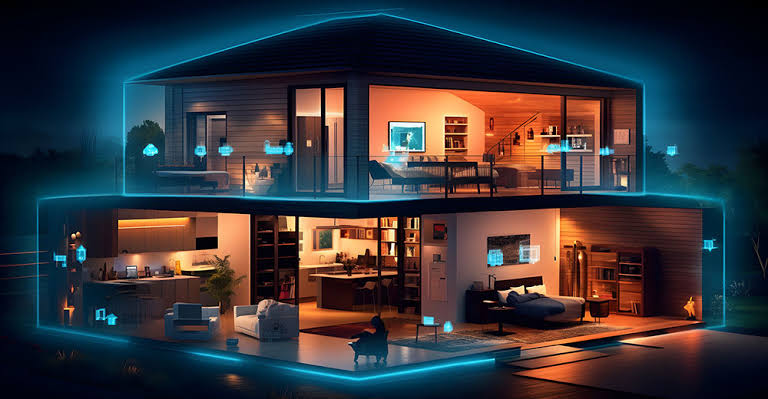As smart homes become increasingly common, homeowners are discovering the power of integrating multiple technologies into a seamless, responsive ecosystem. Everything, including locks, surveillance, HVAC, and lighting, can be managed and observed from a distance. However, one critical aspect of smart home integration is often underutilized: perimeter intrusion detection systems (PIDS). By combining PIDS with smart home alarm systems, homeowners can greatly enhance early threat detection, increase situational awareness, and create a layered security strategy that protects from the outside in.
Why Go Beyond Traditional Home Alarms?
Conventional home alarm systems are typically reactive. They identify break-ins after they happen, usually when a window is smashed or a door is opened. While useful, this approach gives intruders time to enter the property and potentially cause harm or damage.
In contrast, a perimeter intrusion detection system is proactive. It identifies threats before they reach the house by monitoring the property boundary. Once integrated with the home’s alarm and automation system, PIDS becomes a critical first line of defense, allowing homeowners to deter, delay, or respond to intrusions in real time.
What is a PIDS and How Does It Work?
A security device called a perimeter intrusion detection system (PIDS) is made to identify attempts at illegal entry at the boundaries of a restricted area, typically around walls, fences, or subterranean perimeters.Various technologies are used in PIDS, including infrared sensors, fence vibration sensors, and buried cable intrusion detection system.
Among these, buried cable intrusion detection systems are increasingly favored for residential use due to their discreet installation, high reliability, and resistance to tampering and weather. These systems utilize coaxial or fiber optic cables buried along the perimeter. When pressure or motion is detected above ground—such as a person walking or digging—the system analyzes signal disturbances and triggers an alert.
Benefits of Buried Cable Intrusion Detection in Smart Homes
Homeowners seeking both aesthetics and high-performance security often choose buried systems for several key reasons:
Invisible Protection: Since the cables are underground, they don’t alter the property’s appearance.
Difficult to Tamper With: Intruders cannot easily see or access the cables, making them a more secure option.
Customizable Sensitivity: The system can be tuned to distinguish between human movement and smaller disturbances like animals or rain.
All-Weather Operation: Unlike some optical or thermal sensors, buried systems remain effective in fog, rain, snow, or low-light conditions.
A buried cable intrusion detection system provides discreet yet robust perimeter monitoring, making it ideal for smart homes that demand security without compromising design or comfort.
How Integration Works
Integrating a PIDS with a smart home alarm system enables all security components to work in tandem. Here’s how it typically functions:
Real-Time Alerts: When the PIDS detects a threat, it sends an alert to the central smart hub or alarm system.
Automated Actions: The system can be programmed to trigger specific actions—such as activating outdoor lights, locking doors, sending push notifications, or sounding alarms.
Surveillance Activation: Connected cameras can automatically point toward the detected breach for immediate visual confirmation.
Remote Access: Homeowners can view intrusion data and surveillance footage from their smartphones or smart displays.
Law Enforcement Notification: In monitored systems, the security provider can contact local authorities immediately upon confirmed intrusion.
This level of coordination turns your home into a responsive environment—one that can detect, react, and escalate security breaches with minimal delay.
Key Integration Considerations
When merging a PIDS with a smart home alarm system, the following aspects must be considered:
Compatibility: Ensure the PIDS technology can communicate with your smart home hub or alarm platform, whether via API, relay modules, or wireless protocols like Zigbee or Z-Wave.
Zoning Capability: For larger properties, the system should support zoning to detect and identify intrusions in specific areas.
False Alarm Management: The system must be finely tuned to reduce nuisance alarms, ensuring reliability without creating unnecessary panic.
Power & Backup: As with all critical systems, ensure your PIDS and alarm systems are backed up by battery or UPS in case of a power outage.
Real-World Application Example
Imagine a smart home equipped with a buried cable intrusion detection system surrounding its garden and driveway. At night, an intruder attempts to cross the lawn. The pressure-sensitive buried cable detects the footsteps and instantly alerts the central smart home system. In response, the following actions occur within seconds:
Exterior floodlights turn on.
Surveillance cameras start recording and zoom toward the disturbance.
The homeowner receives a phone alert.
An audible siren activates to deter the intruder.
If set up, a security service is notified to take further action.
All of this happens before the intruder even reaches a window or door—buying critical time and often stopping the intrusion entirely.
Enhancing Peace of Mind with Layered Security
Smart homes represent the future of residential living, and with that comes the responsibility to protect the advanced systems and valuable property they contain. By integrating a buried cable intrusion detection system into a smart alarm network, homeowners gain a crucial edge in security: awareness before intrusion.
This layered approach—combining outer perimeter detection, surveillance, and indoor alarms—ensures that every stage of a potential threat is covered. Whether you’re at home, at work, or on vacation, a well-integrated PIDS setup ensures you stay informed and protected.
Final Thoughts
As smart home technology advances, safety is just as important as convenience.As security threats grow more sophisticated, homeowners must adopt proactive and integrated solutions. A buried cable intrusion detection system, when connected to your smart alarm system, provides invisible, intelligent, and immediate protection where it matters most: at the edge of your property.
Smart living deserves smart protection—and it begins with securing the perimeter.

